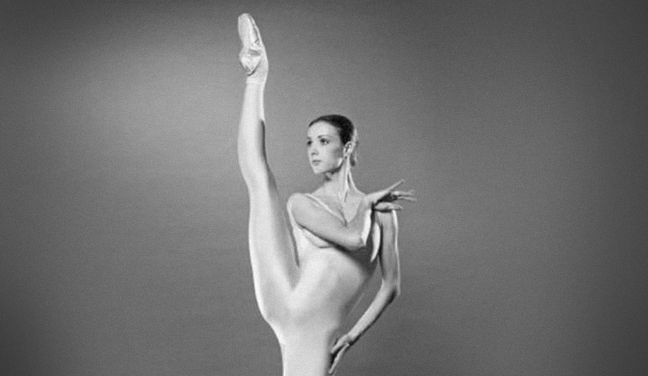How To Achieve Control in Adagio
Everyone aspires to have that breathtaking, Sylvie Guillem line in développé à la seconde. I’ve always been on the tighter side, so extension did not come easy to me. Although I’m hypermobile, my muscles themselves are tight, which hinders my mobility. For the longest time, I stretched and stretched— but my extension didn’t get any higher. I would sit in the oversplits for hours, have friends force my leg up, and so on. These are all really dangerous practices that can harm your body long-term, weaken your joints, and are also totally useless. The real progress began when I realized that lack of strength, not flexibility, was the root cause of my lack-luster adagio. The true testament was that I could hold my leg up behind my head with my hand, but when it came to holding it in place—I was no match for gravity. I had the flexibility, but lacked the strength to back it up. Something that has really helped me with my adagio is core control. Although flexibility is necessary in order to achieve to the desired range, honing in on your intrinsic core muscles will help stabilize and improve balance. Every extension should originate from the core. You should feel your transverse abdominis engage as soon as you pick up your foot in sur le coup de pied before bringing it up to passé and eventually développé.
line in développé à la seconde. I’ve always been on the tighter side, so extension did not come easy to me. Although I’m hypermobile, my muscles themselves are tight, which hinders my mobility. For the longest time, I stretched and stretched— but my extension didn’t get any higher. I would sit in the oversplits for hours, have friends force my leg up, and so on. These are all really dangerous practices that can harm your body long-term, weaken your joints, and are also totally useless. The real progress began when I realized that lack of strength, not flexibility, was the root cause of my lack-luster adagio. The true testament was that I could hold my leg up behind my head with my hand, but when it came to holding it in place—I was no match for gravity. I had the flexibility, but lacked the strength to back it up. Something that has really helped me with my adagio is core control. Although flexibility is necessary in order to achieve to the desired range, honing in on your intrinsic core muscles will help stabilize and improve balance. Every extension should originate from the core. You should feel your transverse abdominis engage as soon as you pick up your foot in sur le coup de pied before bringing it up to passé and eventually développé.
So, what is the transverse abdominis?
Transverse Abdominis vs. Rectus Abdominis
The transverse abdominis is the deepest innermost layer of the abdominal muscles. It lies below the rectus abdominis, or the “six-pack” muscles. The transverse abdominis should be engaged every time a limb moves (i.e. in extension). The TVA stabilizes the pelvis and also defends your body against repetitive physical stresses (i.e. all of ballet). A strong TVA will take pressure and force off of your back and joints. It will also keep your hips looser because instead of holding on to your psoas and hip flexors for dear life in adagio, you will be strong through your core. Although the “six-pack” abs may be aesthetically pleasing, those abdominal muscles are more superficial and have very little to do with stability. So, doing a million crunches may make your six-pack pop, but won’t get you that deep core strength. Exercises like heel slides on your back may seem easy, but are actually really difficult to achieve with perfect form. Think about pulling your belly button to your spine and up towards your crown, without gripping your hip flexors or tucking your pelvis under, while sliding your heels forward and drawing them back. Pilates is a great method of cross training that if done correctly will strengthen this part of the abdominals!



